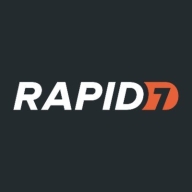

Rapid7 InsightIDR and Trend Vision One are two competing security solutions offering diverse capabilities to address security challenges. Trend Vision One seems to have the upper hand in technical features, while Rapid7 InsightIDR excels in pricing and support satisfaction.
Features: Rapid7 InsightIDR includes threat detection, automated investigations, and incident response capabilities. Trend Vision One features comprehensive threat intelligence, extensive endpoint detection, and cross-layer analytics.
Room for Improvement: Rapid7 InsightIDR could enhance its technical features to compete better with more advanced offerings. Its feature depth might be an area for future improvements. Trend Vision One, on the other hand, could improve in terms of making its setup less demanding on technical resources and streamlining its complex features for simpler usability.
Ease of Deployment and Customer Service: Rapid7 InsightIDR is noted for its straightforward deployment and excellent customer service, making it suitable for teams with varying expertise levels. Trend Vision One offers a seamless deployment model but may require more technical expertise for a complete setup, though it offers solid customer support structures.
Pricing and ROI: Rapid7 InsightIDR generally offers more competitive pricing and better-perceived ROI, appealing to budget-conscious buyers. While Trend Vision One has higher setup costs, its advanced capabilities justify the investment for businesses prioritizing comprehensive threat management.
| Product | Market Share (%) |
|---|---|
| Trend Vision One | 2.5% |
| Rapid7 InsightIDR | 1.2% |
| Other | 96.3% |


| Company Size | Count |
|---|---|
| Small Business | 19 |
| Midsize Enterprise | 5 |
| Large Enterprise | 6 |
| Company Size | Count |
|---|---|
| Small Business | 40 |
| Midsize Enterprise | 11 |
| Large Enterprise | 34 |
Parsing hundreds of trivial alerts. Managing a mountain of data. Manually forwarding info from your endpoints. Forget that. InsightIDR instantly arms you with the insight you need to make better decisions across the incident detection and response lifecycle, faster.
Trend Vision One offers comprehensive protection for endpoints, networks, and email with centralized visibility. It is valued for its attack surface management, real-time threat detection, integrated management, ease of deployment, and user-friendly interface.
Trend Vision One provides a sophisticated security platform combining endpoint, network, and email protection with features like virtual patching and advanced AI capabilities. Its centralized management and integration with platforms like Office 365 and Azure make it an attractive option for organizations needing streamlined workflows and efficient risk management. While it boasts robust integrations and ease of use, enhancements are needed in reporting, tool integration, and reducing false positives. Users call for better support infrastructure, faster response times, and improved threat intelligence capabilities. Despite some complexity, its AI and ML features significantly enhance threat detection and response.
What Features Define Trend Vision One?
What Benefits Should Users Look For?
Trend Vision One is implemented in industries that require endpoint protection, ransomware defense, and incident response, being flexible for both on-premises and cloud environments. It is used to monitor servers, networks, and endpoints, providing features like email protection, behavioral detection, and threat visibility. Organizations benefit from AI and ML, improving their security posture and response capabilities.
We monitor all Endpoint Detection and Response (EDR) reviews to prevent fraudulent reviews and keep review quality high. We do not post reviews by company employees or direct competitors. We validate each review for authenticity via cross-reference with LinkedIn, and personal follow-up with the reviewer when necessary.